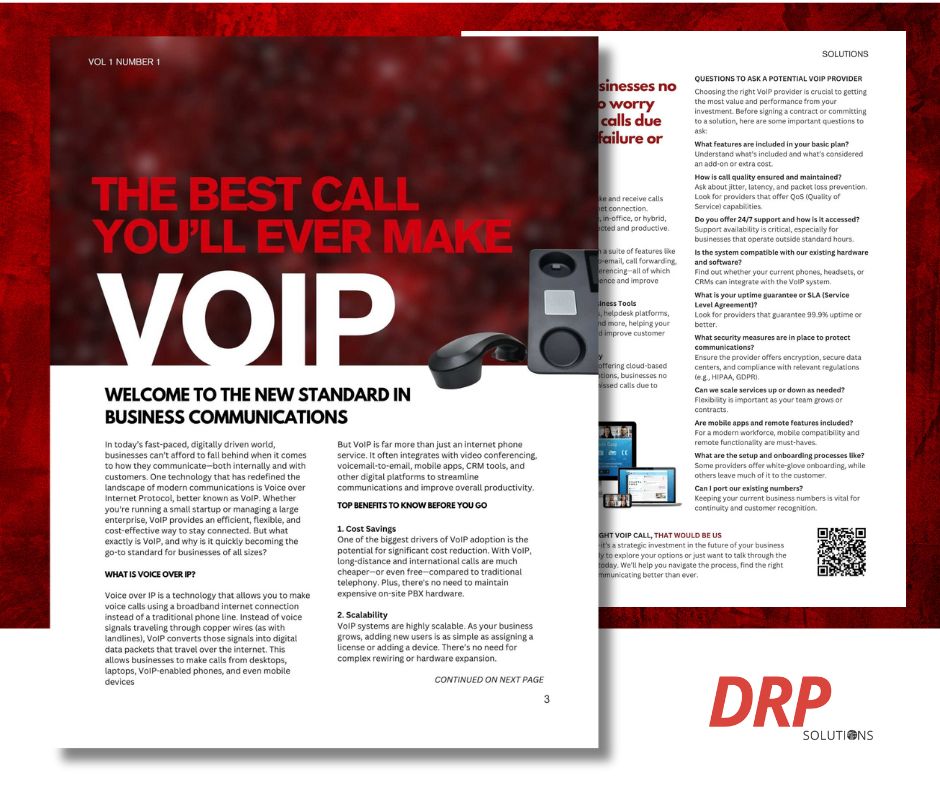In today’s fast-paced, digitally driven world, businesses can’t afford to fall behind when it comes to how they communicate—both internally and with customers. One technology that has redefined the landscape of modern communications is Voice over Internet Protocol, better known as VoIP. Whether you’re running a small startup or managing a large enterprise, VoIP provides an efficient, flexible, and cost-effective way to stay connected. But what exactly is VoIP, and why is it quickly becoming the go-to standard for businesses of all sizes?
What is Voice-Over IP?
Voice over IP is a technology that allows you to make voice calls using a broadband internet connection instead of a traditional phone line. Instead of voice signals traveling through copper wires (as with landlines), VoIP converts those signals into digital data packets that travel over the internet. This allows businesses to make calls from desktops, laptops, VoIP-enabled phones, and even mobile devices.
But VoIP is far more than just an internet phone service. It often integrates with video conferencing, voicemail-to-email, mobile apps, CRM tools, and other digital platforms to streamline communications and improve overall productivity.
Top Benefits
1. Cost Savings
One of the biggest drivers of VoIP adoption is the potential for significant cost reduction. With VoIP, long-distance and international calls are much cheaper—or even free—compared to traditional telephony. Plus, there’s no need to maintain expensive on-site PBX hardware.
2. Scalability
VoIP systems are highly scalable. As your business grows, adding new users is as simple as assigning a license or adding a device. There’s no need for complex rewiring or hardware expansion.
3. Flexibility and Mobility
VoIP allows employees to make and receive calls from anywhere with an internet connection. Whether your team is remote, in-office, or hybrid, VoIP ensures they stay connected and productive.
4. Advanced Features
Most VoIP systems come with a suite of features like auto-attendants, voicemail-to-email, call forwarding, call analytics, and video conferencing—all of which enhance the customer experience and improve internal operations.
5. Integration with Other Business Tools
VoIP can integrate with CRMs, helpdesk platforms, project management tools, and more, helping your team streamline workflow and improve customer service.
6. Reliability and Redundancy
With modern VoIP providers offering cloud-based infrastructure and failover options, businesses no longer need to worry about missed calls due to hardware failure or outages.
Questions to ask a Potential VOIP Provider
Choosing the right VoIP provider is crucial to getting the most value and performance from your investment. Before signing a contract or committing to a solution, here are some important questions to ask:
What features are included in your basic plan?Understand what’s included and what’s considered an add-on or extra cost.
How is call quality ensured and maintained?
Ask about jitter, latency, and packet loss prevention. Look for providers that offer QoS (Quality of Service) capabilities.
Do you offer 24/7 support and how is it accessed?
Support availability is critical, especially for businesses that operate outside standard hours.
Is the system compatible with our existing hardware and software?
Find out whether your current phones, headsets, or CRMs can integrate with the VoIP system.
What is your uptime guarantee or SLA (Service Level Agreement)?
Look for providers that guarantee 99.9% uptime or better.
What security measures are in place to protect communications?
Ensure the provider offers encryption, secure data centers, and compliance with relevant regulations (e.g., HIPAA, GDPR).
Can we scale services up or down as needed?
Flexibility is important as your team grows or contracts.
Are mobile apps and remote features included?
For a modern workforce, mobile compatibility and remote functionality are must-haves.
What are the setup and onboarding processes like?
Some providers offer white-glove onboarding, while others leave much of it to the customer.
Can I port our existing numbers?
Keeping your current business numbers is vital for continuity and customer recognition.

